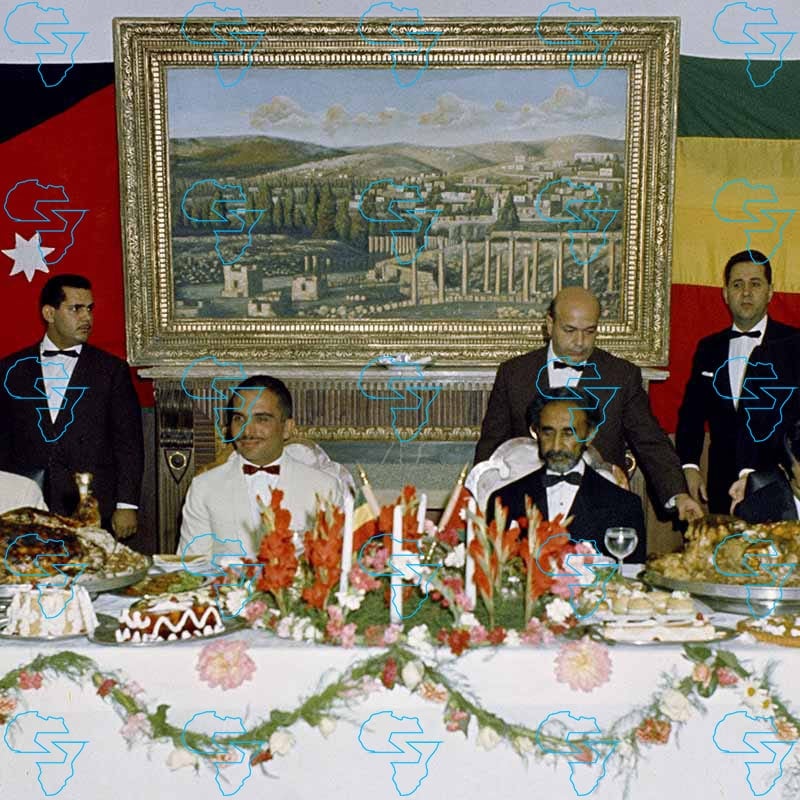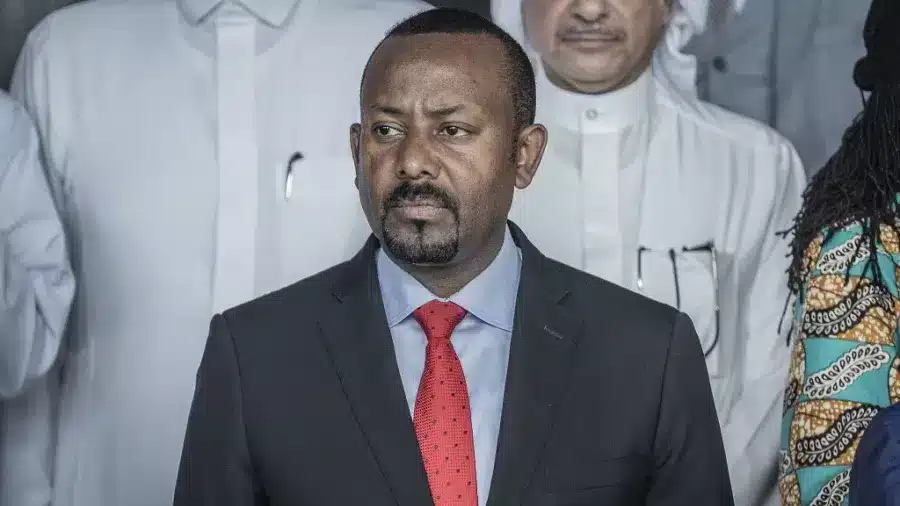
HIM Haile Selassie I and His Majesty King Hussein of Jordan were two towering figures in modern history. Both leaders not only influenced their respective nations but also played significant roles on the global stage. Their leadership styles shed light on how they navigated political challenges and forged diplomatic relationships.
Understand the relationship between these iconic leaders and learn about their contributions to international diplomacy. By examining their diplomatic strategies, we can gain insights into how they managed to sustain their nations’ sovereignty while fostering peace.
Explore how HIM Haile Selassie I and King Hussein handled regional conflicts, interacted with other world leaders, and approached the complex geopolitics of their time. Their legacy continues to inspire leaders worldwide, showcasing the power of unity, resilience, and peace.
Background and Historical Context
In exploring the background and historical context of two influential figures, Emperor Haile Selassie I of Ethiopia and King Hussein of Jordan, one gains insights into the transformative periods they helmed in their respective regions. Their leaderships were marked by distinctive approaches toward modernization, global diplomacy, and internal reforms, contributing significantly to their legacies.
Haile Selassie I: Emperor of Ethiopia
Haile Selassie I, born as Tafari Makonnen, was a pivotal figure in Ethiopia’s history, heralding a period of significant transformation. His reign is chronicled through tales of resilience and vision as he guided Ethiopia through some of its most challenging times.
Early Life and Ascendance to the Throne
Haile Selassie I’s early life was steeped in nobility and ambition. Born on July 23, 1892, in Ejersa Goro, Ethiopia, he quickly showcased a penchant for leadership, something noticed by both his family and the broader Ethiopian aristocracy. The son of Ras Makonnen, the Governor of Harar, Tafari learned the intricacies of governance from an early age.
Ascendance to the throne occurred under dramatic circumstances. Following the death of Empress Zewditu in 1930, Tafari was crowned as Emperor Haile Selassie I. His coronation was a grand affair attended by global dignitaries, marking the beginning of a reign focused on unification and modernization.
Era of Modernization in Ethiopia
The era of modernization under Haile Selassie I was an ambitious endeavor. Determined to lift Ethiopia into modernity, Selassie initiated a series of reforms. He established the first Constitution in 1931, canceled feudal customs, and pushed for educational advancements by building schools and sending students abroad.
In terms of infrastructure, Haile Selassie emphasized road construction and telecommunication development, thereby connecting Ethiopia with the global community. His reforms in the military also ensured Ethiopia had a standing army that could defend its sovereignty, especially during the Italian invasion in 1935.
King Hussein of Jordan: A Monarch’s Journey
His Majesty King Hussein of Jordan’s reign was marked by his adept navigation through regional turbulence and efforts toward internal reforms. His leadership significantly shaped Jordan’s path towards progress and stability.
King Hussein’s Early Years
King Hussein’s early years were filled with both privilege and challenges. Born on November 14, 1935, in Amman, Jordan, Hussein descended from a lineage deeply embedded in Middle Eastern politics. Crowned King at the tender age of 17 after the assassination of his grandfather, King Abdullah I, his youthful eagerness combined with a determined resolve to forge a new path for the nation.
Educated in the United Kingdom at Victoria College in Alexandria and later at Harrow School, Hussein was profoundly influenced by Western ideals, which he later integrated into Jordan’s governance framework.
Challenges and Reforms Under King Hussein
Challenges and reforms under King Hussein highlight his dedicated efforts at steering Jordan through significant socio-political changes. King Hussein navigated the complexities of various Arab-Israeli conflicts while maintaining Jordan’s autonomy and striving for peace.
One of his notable reforms was fostering education and healthcare systems, realizing their importance in king’s strategy for modernization. Hussein facilitated numerous developments in infrastructure, simultaneously promoting a sense of national identity and unity among Jordanians.
His domestic policies often aimed at balancing traditional values with modern demands, resulting in a harmonious yet progressive Middle Eastern nation. King Hussein’s charismatic diplomacy and relentless pursuit of peace earned him respect both regionally and internationally, marking him as a proactive peacemaker in a historically volatile region.
In summary, both Haile Selassie I and King Hussein were visionaries dedicated to elevating their countries amidst adversity. Their stories exemplify the interplay of leadership, dedication, and innovation, leaving an indelible mark on the pages of their respective histories. 🌍
Diplomatic Relations Between Ethiopia and Jordan
Exploring the diplomatic relations between Ethiopia and Jordan reveals a remarkable journey of collaboration and friendship. Both nations, under the visionary leadership of HIM Haile Selassie I and His Majesty King Hussein of Jordan, embarked on a path of mutual interests and respect. Their alliance paved the way for a series of influential meetings and agreements that fortified their countries’ understanding and collaboration on various realms.
Establishing Diplomatic Ties
First Official Visits and Meetings
First official visits and meetings between the two nations set the stage for a strong diplomatic bond. When leaders from Ethiopia journeyed to Jordan and vice versa, it wasn’t just for photo opportunities but a sincere endeavor to understand each other’s culture, challenges, and aspirations. These visits were characterized by high-level discussions, cultural celebrations, and learning exchanges. HIM Haile Selassie I’s historic visit to Amman marked a turning point, establishing a robust foundation for future cooperation. These initial encounters laid critical groundwork for fostering a long-lasting partnership. ✈️
Significant Treaties and Agreements
Significant treaties and agreements were a cornerstone in fortifying the bond between Ethiopia and Jordan. One of the landmark agreements included initiatives in economic, cultural, and educational exchanges. Such treaties often involved enhancing trade and investment, promoting cultural exchanges, and joint projects in education and technology. These agreements not only solidified the diplomatic ties but also provided tangible benefits to both nations, contributing to regional stability and prosperity. 📜
Collaboration on Regional and International Issues
Efforts Towards Regional Stability
Efforts towards regional stability became a shared mission for both Ethiopia and Jordan. Understanding the complexities of their respective regions, both countries prioritized initiatives that sought peace and stability. Whether it was conflict resolution or humanitarian aid, Ethiopia, under Haile Selassie I, and Jordan, led by King Hussein, worked together in international forums to advocate for solutions that transcended borders. Their joint efforts in mediating regional disputes showcased a commitment to peace and diplomacy over any personal or national agenda.
Shared Goals in International Peace Initiatives
Shared goals in international peace initiatives were vividly clear between the two nations. Both leaders were staunch advocates for peaceful resolution of conflicts, not just in their backyard, but on an international level. This mutual commitment manifested in support for UN peacekeeping missions, concerted dialogues on disarmament, and coalition building with other peace-focused countries. They collectively raised their voices for global cooperation in areas such as climate change, sustainable development, and human rights, which further cemented their roles as influential peacemakers on the global stage. 🌍
This section illustrates how the diplomatic relationship between Ethiopia and Jordan became a blueprint for international cooperation. Their collaborative efforts significantly contributed to not only their respective regions but also influenced a broader global audience.
Legacy and Impact
Haile Selassie I: Influences Beyond Ethiopia
Role in the African Unity Movement
Haile Selassie I played a pivotal role in the African Unity Movement. He recognized the importance of a united Africa and worked tirelessly towards this goal. In 1963, Haile Selassie was instrumental in the establishment of the Organization of African Unity (OAU), which aimed to foster cooperation among African nations and eradicate colonialism. His vision for a peaceful and united Africa helped lay the foundation for the African Union, which succeeded the OAU in 2002.
The emperor’s speeches and diplomatic efforts were pivotal in uniting African leaders under a common cause. Known for his profound words, Haile Selassie’s 1963 address to the United Nations pleaded for African solidarity and global peace, highlighting the need for human rights and peaceful resolutions. His leadership in this movement inspired many Africans and became a beacon of hope for independence and unity across the continent.
Global Recognition and Influence
Globally, Haile Selassie I was not only a symbol of African unity but also of resistance against oppression and tyranny. His stance during the Italian invasion of Ethiopia in 1935 garnered international sympathy and support. His impassioned plea before the League of Nations in 1936, seeking assistance for his nation, drew attention to the severity of fascist aggression and highlighted the need for global collective security.
Beyond his political role, Haile Selassie’s influence extended into culture and religion. He is revered by the Rastafari movement, which regards him as a messianic figure and an embodiment of black pride and liberation. Haile Selassie’s visits to Jamaica and the Caribbean showcased his understanding and appreciation for the global African diaspora, further cementing his status as a leader and icon.
King Hussein: Lasting Contributions to the Middle East
Peace Efforts and Political Stability
King Hussein of Jordan made significant contributions to peace efforts and political stability in the Middle East. His reign witnessed Jordan’s transformations and attempts at maintaining regional peace. King Hussein was known for his diplomatic approach in resolving conflicts, earning him the reputation of a peacemaker.
Notably, King Hussein played an instrumental role in the peace negotiations between Israel and Jordan. The 1994 Israel-Jordan Peace Treaty marked a significant step towards regional stability, showcasing King Hussein’s commitment to dialogue and reconciliation. His balanced policies ensured that Jordan remained a pillar of stability in an otherwise tumultuous region.
Influence on Jordan’s Progress and Modernization
Under King Hussein’s leadership, Jordan experienced significant advancements in various sectors. His efforts in modernizing the nation were pivotal, focusing on economic growth, education, and infrastructure. He invested in developing Jordan’s education system, healthcare, and social services, laying the groundwork for future generations.
King Hussein encouraged technological advancements and built a diplomatic network that led to improved international relations and investment opportunities for Jordan. His vision of progress and modernization not only enhanced the quality of life in Jordan but also established the country as a key player on the regional stage. His reign is remembered for fostering national pride and unity among Jordanians, and his impact is still felt today.


